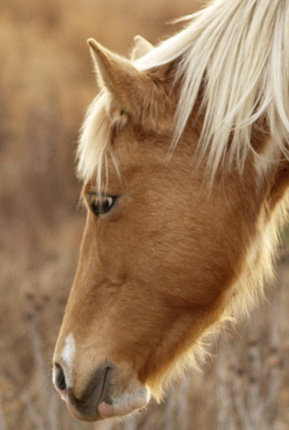
All Animals

The Horse: Noble and Versatile Partner of Humanity
The horse, a majestic and versatile creature, has played a pivotal role in human history and culture for thousands of years. Revered for its grace, strength, and intelligence, the horse has been a companion in work, sport, and recreation, shaping civilizations and contributing significantly to the development of human societies.
Horses are known for their impressive physical attributes. They possess powerful muscles and a strong, agile build, which enable them to run at high speeds and perform a variety of tasks. Adult horses typically stand between 4.5 to 6 feet (1.4 to 1.8 meters) tall at the shoulder and weigh between 900 to 2,200 pounds (400 to 1,000 kilograms), depending on the breed and purpose. Their long legs and large hooves are adapted for running long distances and navigating diverse terrains.
The domestication of horses began around 4,000 to 6,000 years ago in the steppes of Central Asia. This pivotal event transformed human societies by providing a means of transportation, enhancing agricultural productivity, and revolutionizing warfare. Horses became essential in various cultures, serving as a primary mode of transport, a source of power for plowing fields, and a key asset in battles and exploration.
Horses are highly intelligent and trainable animals, capable of forming strong bonds with humans. They are used in a variety of equestrian disciplines, including dressage, show jumping, eventing, and racing. Each discipline highlights different aspects of the horse’s abilities, from its agility and precision in dressage to its speed and stamina in racing.
The social nature of horses is evident in their behavior. They are herd animals with a well-defined social structure, often forming close bonds with other horses. Within a herd, horses establish hierarchies and communicate through a range of vocalizations, body language, and grooming. This social behavior is crucial for their well-being and influences their interactions with humans and other animals.
The horse’s diet primarily consists of grasses, hay, and grains. Their digestive system is adapted to process fibrous plant material, and they require a balanced diet to maintain their health and energy levels. Regular grooming and exercise are also essential for keeping horses in optimal condition and ensuring their overall well-being.
Despite their many roles and contributions, horses face various challenges. Issues such as inadequate care, neglect, and overwork can impact their health and quality of life. In addition, changes in land use and urbanization can affect their natural habitats and access to grazing areas. Efforts by equine welfare organizations aim to address these issues, providing support for horse rescue, rehabilitation, and education on proper care.
Horses hold a special place in human culture and history. They appear in mythology, literature, and art, symbolizing qualities such as freedom, power, and elegance. Their presence in equestrian sports and recreational activities continues to inspire and captivate people around the world.
In summary, the horse, with its noble stature and versatile abilities, remains an enduring symbol of strength, grace, and partnership. Its historical significance and ongoing contributions to human endeavors underscore the profound connection between horses and people. By supporting equine welfare and appreciating the remarkable qualities of horses, we contribute to the continued bond between humanity and these magnificent animals.
